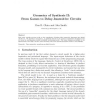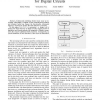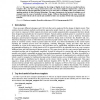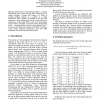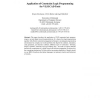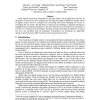106
Voted
TCAD
2010
14 years 7 months ago
2010
The Monte-Carlo (MC) technique is a traditional solution for a reliable statistical analysis, and in contrast to probabilistic methods, it can account for any complicate model. How...
105
Voted
ENTCS
2010
15 years 13 days ago
2010
This paper extends previous work on the compilation of higher-order imperative languages into digital circuits [4]. We introduce concurrency, an essential feature in the context o...
110
Voted
DSD
2010
IEEE
15 years 17 days ago
2010
IEEE
Abstract—Continuously shrinking feature sizes cause an increasing vulnerability of digital circuits. Manufacturing failures and transient faults may tamper the functionality. Aut...
113
click to vote
CSREAESA
2003
15 years 1 months ago
2003
The paper presents a technique for the design of digital circuits based on reusable hardware templates (HT). Any HT is being constructed in such a way that it might be employed for...
104
click to vote
ITC
1995
IEEE
15 years 3 months ago
1995
IEEE
A nalog circuit implementations of fuzzy logic are characterized by performing logical connectives of analog signals. They can be considered as generalization of digital circuits ...
EH
2004
IEEE
15 years 4 months ago
2004
IEEE
Multi Expression Programming (MEP) is a Genetic Programming (GP) variant that uses linear chromosomes for solution encoding. A unique MEP feature is its ability of encoding multipl...
DAC
1990
ACM
15 years 4 months ago
1990
ACM
In this paper, we provide an overview of a system designed for verifying the consistency of timing specifications for digital circuits. The utility of the system comes from the ne...
121
click to vote
CCL
1994
Springer
15 years 4 months ago
1994
Springer
Abstract: This paper describes the application of CLP (constraint logic programming) to several digital circuit design problems. It is shown that logic programming together with ef...
111
Voted
DFT
2002
IEEE
15 years 5 months ago
2002
IEEE
Many digital circuits have constraints on the logic values a set of signal lines can have. In this paper, we present two new techniques for detecting the illegal combinations of l...
102
Voted
FM
2003
Springer
15 years 5 months ago
2003
Springer
We present the formal framework for a novel approach for specifying and automatically implementing systems such as digital circuits and network protocols. The goal is to reduce the...

